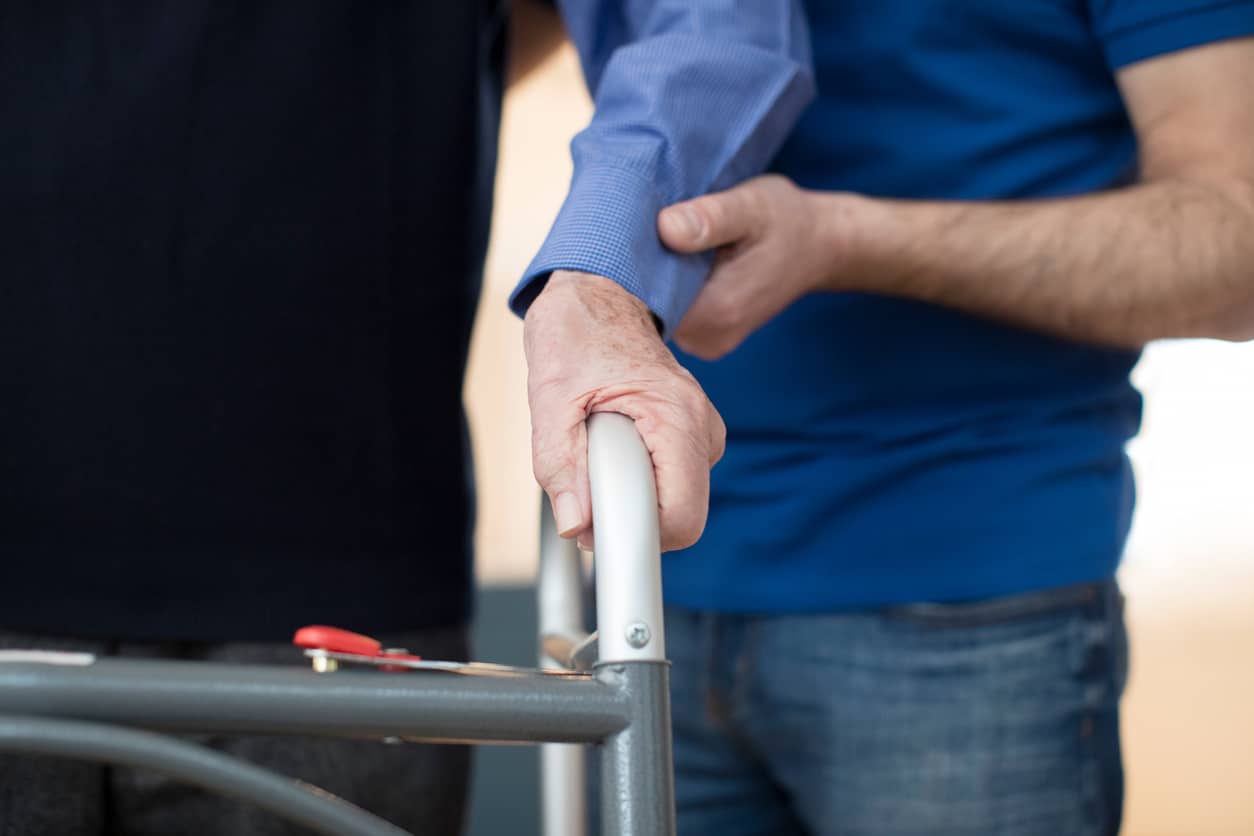All walkers are not the same, and in fact, many people have no idea how many different types and styles of walkers there are available. Consider the different types of walkers and evaluate them to find the one that best suits your mobility level, preferences, and comfort- try them out before you make your choice! This truly is the best way to find a walker.
When thinking about mobility walkers, many people do not realize that there are many different types and styles available, depending on your needs and preferences. Walkers are a type of mobility device that provides support and stability for the user when they are walking. Typically, walkers have wheels but there are some without.
Walkers are amazingly versatile, and bring the following benefits to the table:
- Improves balance.
- Reduces the risk of a fall.
- Supports weak muscles.
- Limits weight and pressure on lower body.
- Assists with safe transfers after surgery.
- Aids with fatigue when standing or walking.
- Helps the user sit and rise from a seated position safely.
Know that a walker needs to fit the user properly to be comfortable, useful, and safe. Talk to a mobility equipment retailer if you are concerned about your walker’s fit.
Knowing your options can make it easier to choose the right walker for your needs:
Types of Walkers
With so many different types of walkers on the market, you should consult with a physical therapist or your healthcare provider to determine which type is best for your distinct needs. Plus, it makes sense to try the different styles and sizes of walkers yourself, in-person, whenever possible. Consider also investing in walker accessories- like baskets and pouches- to help make the device more convenient and practical for everyday living.
Standard walkers
A standard walker typically is one with four legs and no wheels. These are adjustable to fit patients, in width and height. These must be picked up by the user and moved when walking. Some users incorporate caps on two of the legs to help it glide along more easily. Some even use tennis balls!
Rolling walkers
Rolling walkers feature wheels on the front of the device, making them more natural and smooth to use. Wheels are also a helpful feature when the user would have difficulty picking the walker up and moving it with each step. There are two different types of rolling walkers: anterior and posterior.
Here is a little more about these two distinct rolling walkers:
Anterior rolling walkers
Anterior rolling walkers have support in the front of the base, and it typically has four wheels.
Posterior rolling walkers
Posterior rolling walkers have support in the back of the walker and feature two or four wheels. You may also see a pair of ratchet wheels to prevent the walker from rolling. Side handles make using it different than the anterior rolling walkers. Your provider will identify which type of support is best for you.
Rollator walkers
Another kind of wheeled walker is the rollator, which generally is the category of three Wheeled and four-wheeled walkers. These typically have handlebars, hand brakes, and a seat, which makes them ideal for anyone with chronic pain or fatigue. The rollator walker moves fast and turns on a dime, so it can be comfortable to use and easy to adapt to. Knee walkers are a type of rollator that can be useful after surgery or during the rehabilitation of a foot or leg injury.
Gait trainers
Gait trainers are used primarily by Occupational therapists for individuals learning to walk- or that need help with their gait. These are a lot like rolling walkers, but they implement straps and fixtures to provide security to the user. Gait trainers are more specialized than wheeled walkers and are used prevalently in skilled nursing-type settings and situations.
Walker Features
Some walker features amp up the utility and usefulness of your walker. Ask a retailer about a walker that can fold up for easy storage, or for a walker with handbrakes to help during use.
Many users invest in trays that secure to the walker and that allow them to move about with items, food, or other belongings easily. Pouches that clip to the side of the walker are also helpful in managing to carry items from one spot to another.
You may benefit from a walker with a seat, which can help those with fatigue or chronic conditions. Maintain your walker and take care of it so that it can, in turn, help and take care of you. Need help with this? Talk to your healthcare providers to learn more.
When you are ready to explore walkers, talk to a professional at Pacific Mobility to learn more. From short-term rehab to lifelong aid, they have quality walkers that can make life easier and more accessible!
President, Husband, Father, Grandfather Graduate of UC Davis- Bio Sci Major- Go Aggies! Jeff has extensive experience in all of Pacific Mobility’s products and services, and specializes in accessibility products as well as stairlifts, ceiling lifts and custom wheel chairs. His hobbies include spending time with family, gardening, mountain biking, exercising and off road motorcycle riding.
24 years as Owner/President of Pacific Mobility Center – selling, installing, and servicing stairlifts, porch lifts, ceiling lifts, pool lifts, handicap ramping, specialty wheelchairs, scooters, power wheel chairs, and other power mobility devices
Certified Environmental Access Consultant since 2008
Licensed General Contractor since 1998
Certified Aging in Place Specialist since 2016
Board Member for Home Access Professionals
Member of Association of Members of the Accessibility Equipment Industry (AEMA)




